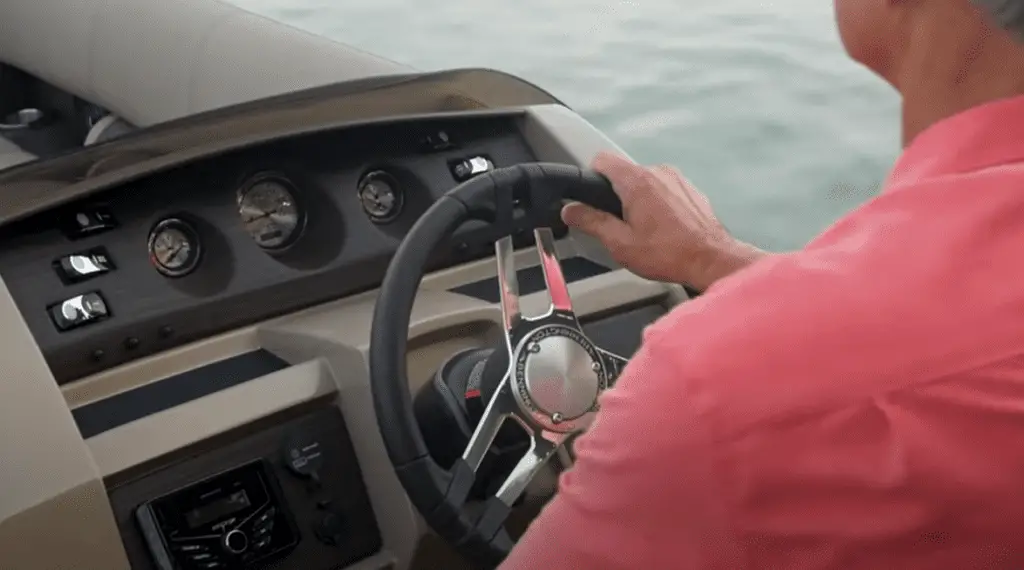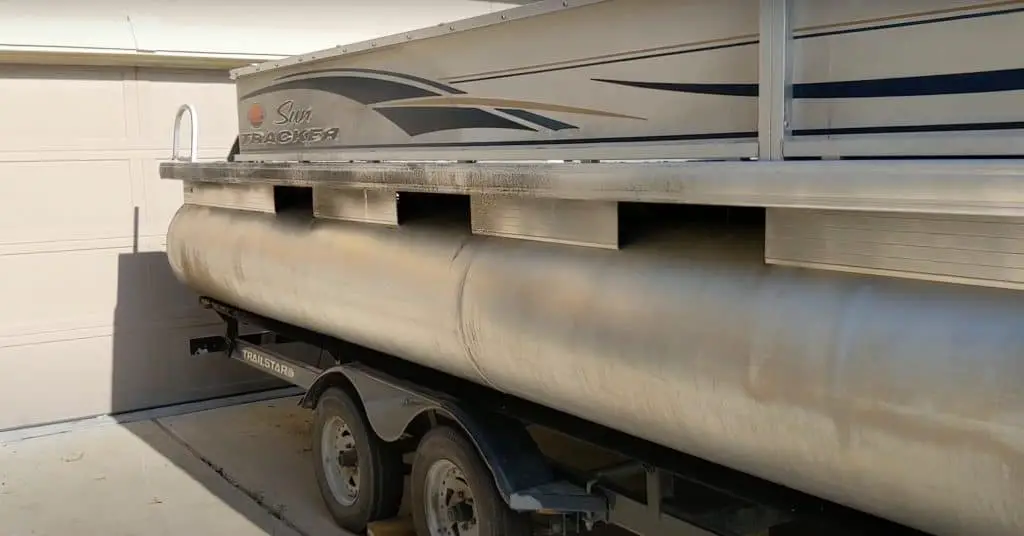That first time you take your boat out to the water can feel like the culmination of a lifelong dream. But if your boat was stored up in a garage and perched on a trailer for those first few days after being released from the dealership, there’s going to be one tricky hurdle between your boat and the water - the launch.
Not everyone knows how to launch a pontoon boat. Heck, even more experienced boaters might struggle with the process. So before you wing it and cross your fingers, you might have better luck by reading this guide.
Preparing for the Launch
You might be a little extra giddy launching your boat whether it’s the first or the hundredth time. But don’t let the excitement get the best of you. Before you back up your car and trailer, there are a few things you should prepare:
Close Up the Drain Plugs
The drain plugs can typically be found at the lower back of the boat on the tubes. Make sure they’re closed to prevent water from getting in.
Secure the Fenders
Before you get into the water, make sure any bumpers and fenders are in place to protect your boat from dings and scratches as you back up.
Remove the Tie Down Straps
These secure your boat to the trailer. Undoing the straps lets you release the boat once it’s successfully and safely in the water.
Fasten the Bow and Stern Lines
Someone outside your boat will use these lines to guide the watercraft into the water as you back up. If you’re not familiar with the proper knots, you can brush up by checking various guides online.
Some boating guides and articles will tell you that you have to unplug the trailer’s tail lights when you back up into the water. But doesn’t always apply. If you’re using a really old trailer model. But newer models are designed to lock your brakes if you try to operate the trailer with the tail lights unplugged.
Step by Step Guide on Launching a Pontoon Boat

Once everything is ready, it’s time to get to the main event. If you’re not completely confident that you can do it on your own, don’t hesitate to ask for help from someone at the marina. Even better if you have a friend with you who can help you learn the ropes.
Back Up in Front of the Ramp
Proper positioning should help make the whole launch easier and safer for both you and your boat. So it’s important that you learn the specifics of backing up your boat trailer, which can be just as confusing if you’re new to the task.
The general idea is that turning your wheel left while you back up will cause the trailer’s tail to point left. Turning right will do the opposite. Your objective is to get your vehicle and your trailer as accurately aligned as possible and centered on the ramp.
Remember that even slight turns can result to major changes in your trailer’s position. Practice backing up first if you’re not entirely sure how to do it so you can properly position your boat on the center of the ramp.
Get Into the Water
Once the alignment is all fixed, you can start backing up your trailer and boat into the water. Slow and steady should be your best buddy during this time, especially since you’re going to want to give yourself some leg room to make adjustments as you go along.
You’re going to want to back up your trailer until the propeller is completely immersed. The process entails that you stop at this point until the next step. If there’s someone there to help you, you can hand them the stern line so they can keep the aft from drifting as it starts to float in the water.
Start the Engine
When your boat is at the right depth in the water, it’s time to start the engine. That’s why it’s important to make sure the trailer winch strap is still connected. Have someone climb aboard the boat to start the engine.
After that, have them walk to the back of the boat and check if the water pump is properly functioning. To determine that, you just need to check if there’s any water shooting out of the lower unit. This should be in the area just above the propeller.
Back Up All the Way
With the engine turned on and your second-in-command positioned on the boat, it’s time to back up all the way. Before you do that though, disconnect the trailer winch strap so your boat can disconnect from the trailer once it’s in deep enough water.
Back up your trailer all the way until your boat floats off on its own. Then you can drive the pontoon boat away from the trailer and pull the trailer back up out of the water. You have the option to take the boat to the dock or to steer off to your destination.
Launching Safety Tips
Although the process might seem slow and straight forward, there are loads of things that could go wrong during a launch. Keep these tips in mind during your next launch to prevent accidents and damage.
Always Have Someone Else to Help You Out
As much as possible, you’re going to want to have an extra set of hands and eyes to help with the process. Although you might be able to launch your boat on your own, it’s always easier to have someone there to help.
Take It Slow
There’s really no need to rush into the water. Whether you’re new to the process or if you’ve done it several hundred times, there’s nothing wrong with taking your time.
Prepare for the Conditions at the Ramp
Slippery sludge, jagged rocks, and seedy water are just some of the common elements that make up ramp conditions. Make sure that whoever is in charge of the boat end of the process is properly dressed in boots with sufficient traction to prevent accidents.
Can You Launch By Yourself?
There might be times when there’s really no one else there to help you back up except yourself. It’s still possible to launch your boat alone, albeit with a few minor changes to the process.
Unlike the previous process that involves turning the engine on, you’re going to remove any ties, chains, and straps that secure the boat to the trailer. After that, you’re going to tie an anchor line to the bow which you’re going to hold on to as you back up your boat into the water.
Once the boat is floating on its own, you’re going to take the line and tie it to the dock. Then you can pull your trailer back up out of the water and park it along with your car.
The process might be a little more tedious than launching with a friend at the ready. But you should be able to perfect the process with practice and time.
How to Launch a Pontoon Boat in Shallow Water

The problem with shallow water is that there might not be enough depth for you to get your pontoon boat to float even with the trailer pushed back to the maximum. In this case, your best bet might be to get a roller trailer.
Compared to a bunk trailer, the roller trailer lets you push your pontoon off of the bunks so it slides back into the water. This extends your trailer’s reach, so to speak, letting you get your pontoon in deeper water while your trailer is backed up as far as it can go.
How to Recover or Retrieve a Pontoon Boat
The launch is only really half of the struggle. After the fun and sun, there’s the chore of getting your boat back on the trailer. This can be significantly harder than launching because you’re going to try to align your trailer and boat while it’s in the water.
The best way to do that would be to use a series of ties including bow and stern lines, plus a boat hook. Ask your assistant to walk down the center of the trailer when the boat is aligned and attach the winch cable to the pontoon’s bow eye.
Then you can get started on cranking the winch to bring the boat back to the bunks. When that’s done, you can go off to your marina’s tie down area and secure any straps, chains, and ties that need to be in place before you travel with your boat.
See to it that you do the opposite of all the preparations listed at the start of this article so your boat is ready to take on the road. Also make sure that you take down any loose objects from your car and load them in your car
Off to the Dock
Not all pontoon boat owners know how to launch a pontoon boat, and the whole process can feel confusing and scary. But with practice, you should be able to get it done in a breeze. Just make sure you’ve got a friend to assist you to help streamline the process and prevent accidents especially if you’re new to the task.






